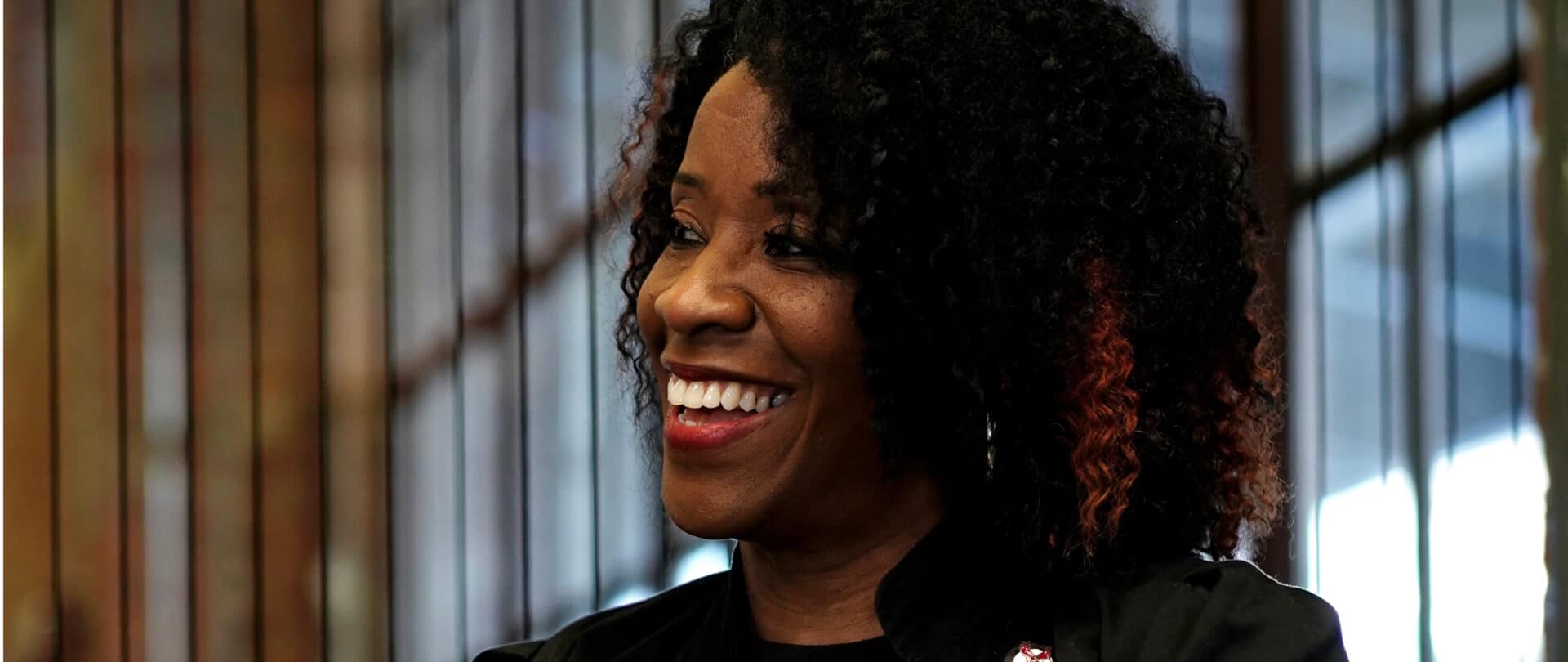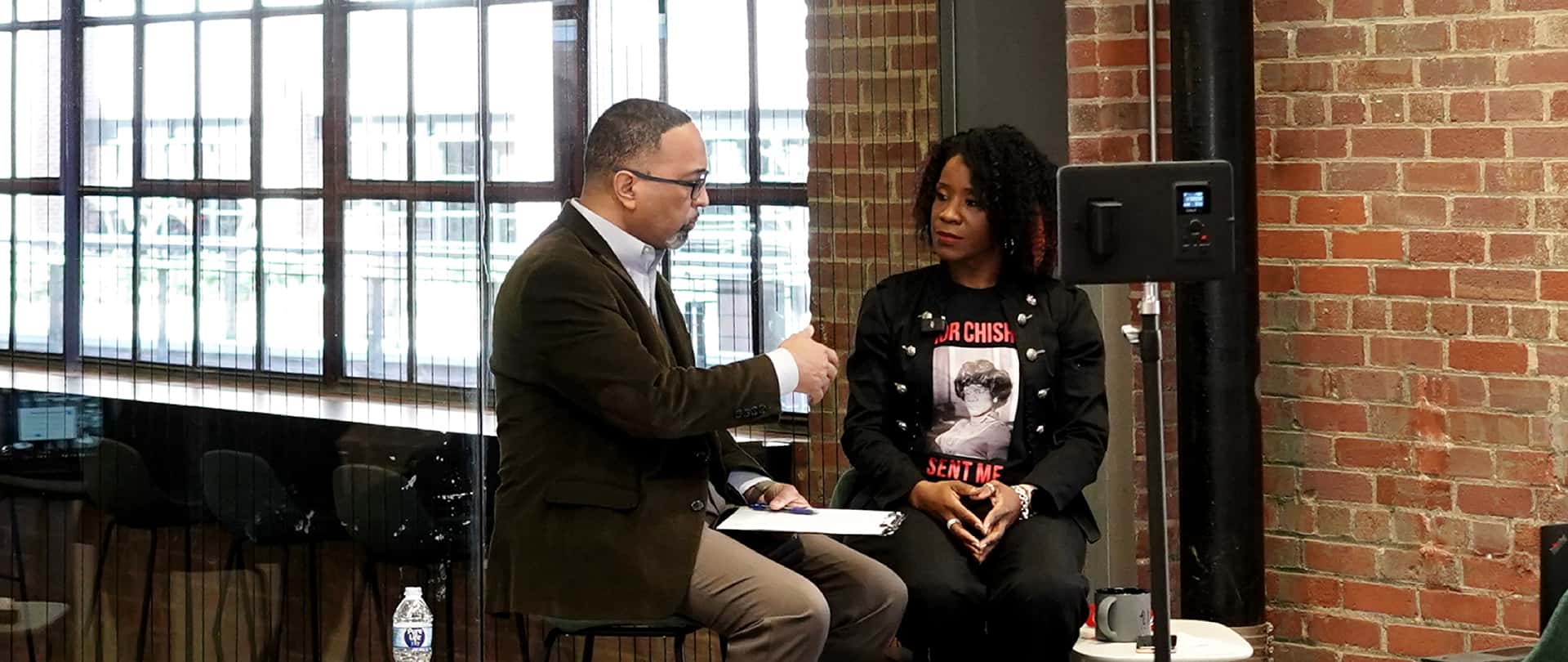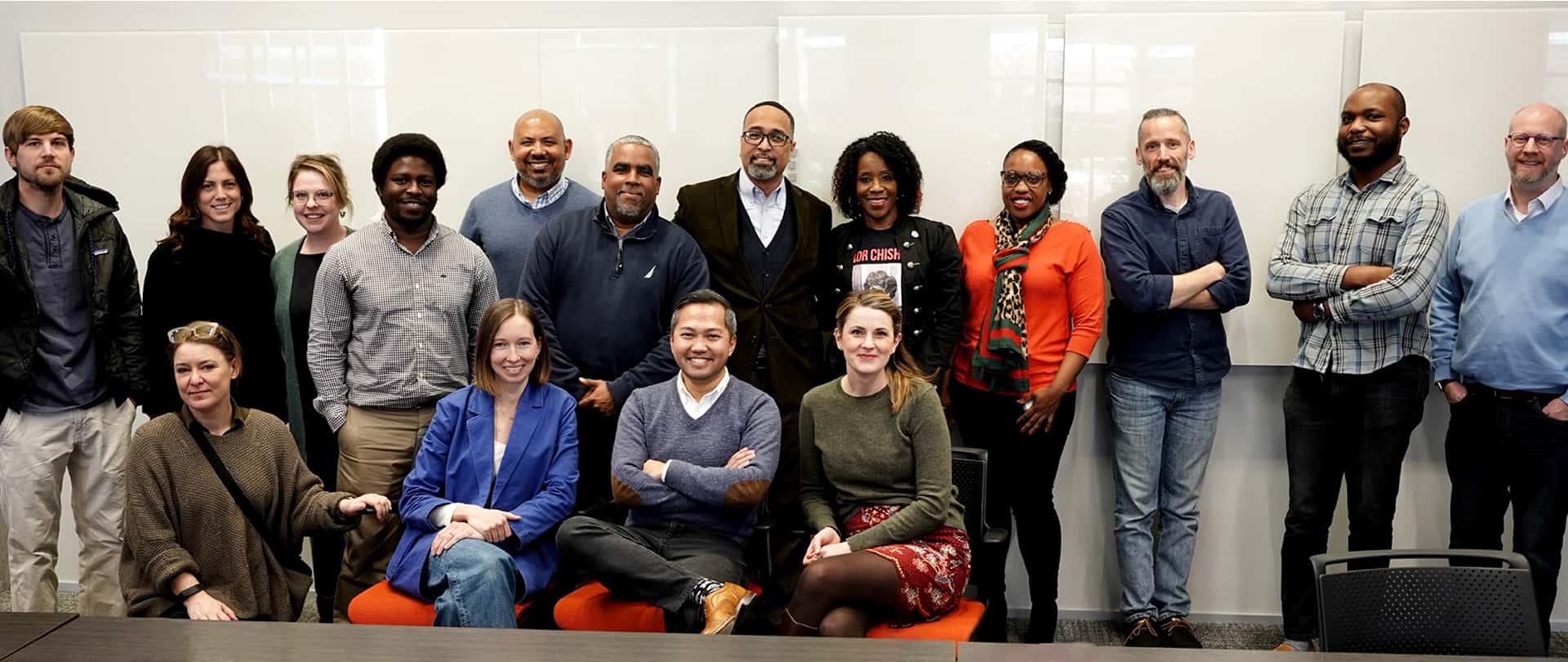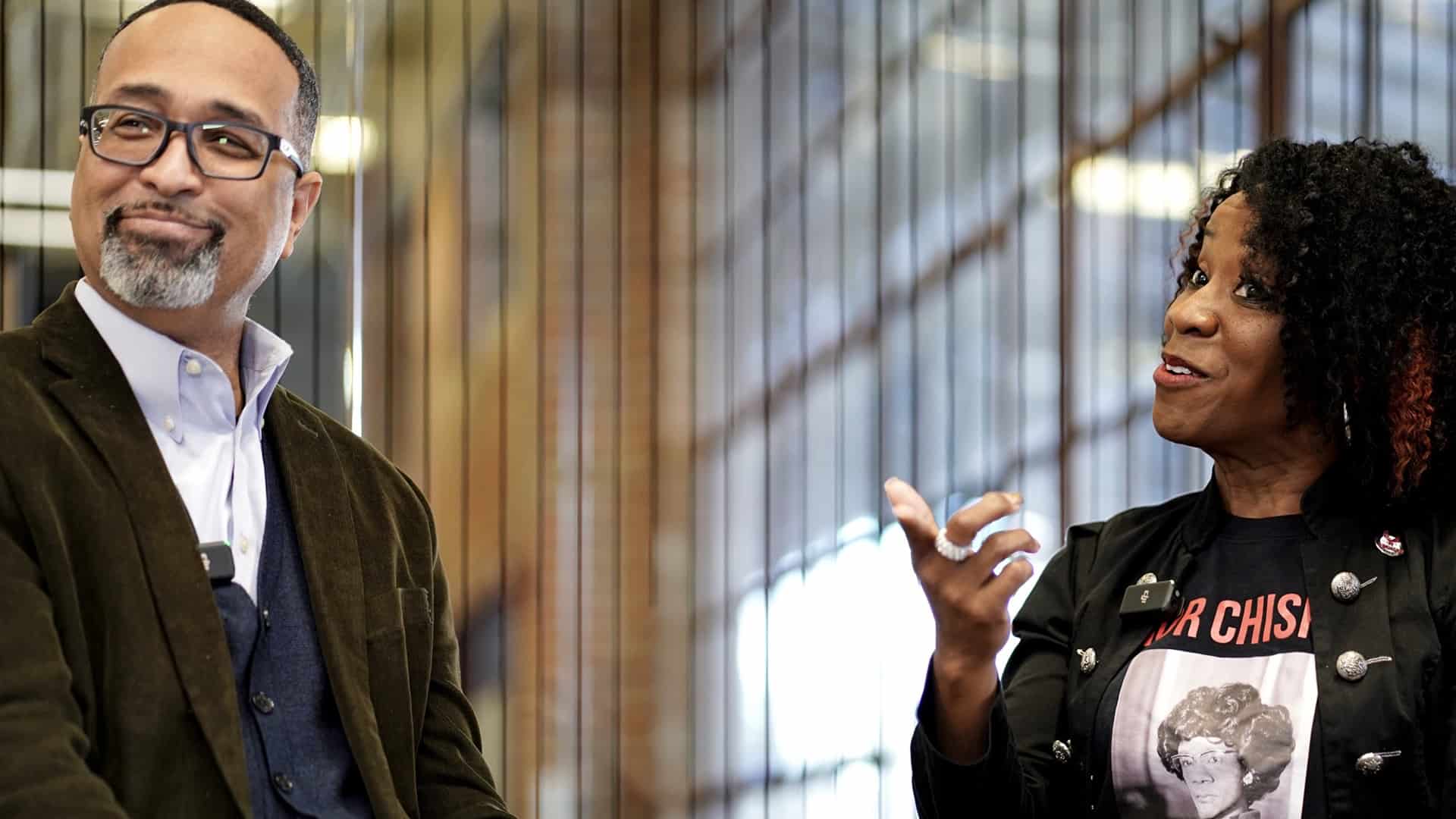In observance of Black History Month, on February 19, Little hosted a firmwide event addressing pressing issues of community investment, heritage preservation, and the challenges posed by gentrification. Led by Jerry Guerrier, Community Studio Principal at Little, and Angelique Stallings, Vice President for Community Investment at the Durham Chamber of Commerce, the event sparked candid conversations about confronting systemic inequalities and empowering marginalized communities.
Community Investment + Preserving a Rich Heritage
Stallings, the first Black woman to serve as Vice President for Community Investment at the Durham Chamber of Commerce, brings a unique perspective to her role. During the discussion, she emphasized the critical need for intentional investment in underserved communities, particularly highlighting the historical neglect faced by Black communities by traditional institutions like Chambers of Commerce. Stallings stressed the significance of ensuring that development efforts in Durham extend beyond the mere construction of buildings to encompass investing in the people who call Durham home.
“We have to make sure that we don’t allow our history and the richness of that history to be diluted,” Stallings remarked, underscoring the necessity of preserving Durham’s rich Black history amidst rapid development. She lamented the loss of legacy neighborhoods to gentrification, noting the significant demographic shifts over the decades.
Challenges of Gentrification
“If you were here 30 years ago, as I was as a young person, you couldn’t get people to come downtown. “Now, we can’t get people to leave,” quipped Stallings.

She noted the visible signs of impending change. “When I see a white woman walking down the street—in her leggings walking her dog—I know [the neighborhood] is about to change. And that’s neither good nor bad—it’s the facts.”
“Once you start to see those types of changes,” explained Stallings, “Then you see changes to the type of retail that’s coming. Now there are sidewalks—which weren’t there for the past 50 years.”
She continued to illustrate how changing demographics bring about improvements like bus stops with coverings, roundabouts, and streetlights. “There is even an increase in police protection—not policing. There’s a difference,” she stressed.
Stallings compared Durham to southeast Washington, D.C., which was once predominantly Black. Reflecting on Mayor Marion Barry’s impactful youth employment initiatives in D.C., she emphasized retaining long-standing residents amidst revitalization efforts. Durham’s transformation under Mayor William V. “Bill” Bell saw the emergence of cultural landmarks like the American Tobacco Campus and the Durham Performing Arts Center (DPAC), as well as the restoration of old buildings into apartments and a surge in new restaurants, all while striving to keep existing residents from relocation.
Confronting Systemic Inequalities
Stallings underscored the need for equitable opportunities to ensure the retention of both existing and emerging communities. “We have to make sure that we don’t price out people who have lived here forever, and that’s what’s happening [with gentrification],” shared Stallings.
Guerrier echoed Stallings’ sentiments, emphasizing the displacement effects of gentrification, pushing residents to neighboring counties without adequate resources or transportation. Stallings stressed the importance of addressing systemic barriers to housing and employment to prevent further disenfranchisement and ensure the continued vibrancy of Durham’s diverse communities.
Acknowledging the multifaceted challenges facing Durham, including racial wealth disparities, housing access crises, and health and education inequities, Guerrier emphasized the need for organizations like Little to understand the context in which they operate and actively address these structural issues.
The conversation delved into uncomfortable truths about the lack of equity and representation within organizations claiming to be committed to community investment. Stallings challenged developers, investors, and organizations to look beyond superficial gestures and examine the composition of their leadership teams and the allocation of resources towards equity initiatives.
“[Organizations] say they really want to do the work—but, often, they don’t. How do I know? Let’s look at the board of directors. Let’s look at the leadership team. Let’s look at who’s actually making decisions. Let’s look at the budget in the EDI department. That’s how I know they aren’t serious,” shared Angelique. “When we have those types of conversations, it turns people’s faces red because they’re uncomfortable with it. But we need to be okay with being uncomfortable. Those conversations about the lack of equity, the lack of upward mobility, the lack of leadership, the lack of representation—those are the conversations I’m having, and it’s exhausting.”
In response to questions about organizational EDI efforts, Stallings emphasized the importance of both grassroots activism and top-down leadership. She underscored the value of grassroots movements in driving meaningful change from the ground up while acknowledging the significance of leadership buy-in and organizational support.

Empowering Marginalized Communities
“At Little,” she challenged, “You’re literally building things—tangible things that you can touch. But how are you building your people?”
Both Stallings and Guerrier highlighted the crucial need to prioritize the needs and voices of marginalized communities in decision-making processes. They advocated for increased collaboration between organizations and community stakeholders to tackle systemic barriers to economic mobility and social inclusion, thereby uncovering blind spots in the impact of companies like Little on their communities and narrowing the gap in inequities.
Stallings emphasized the importance of leveraging the vast and diverse talent pool offered by the over 100 Historically Black Colleges and Universities (HBCUs) across the country, as well as minority-serving institutions (MSIs), to promote diversity and enhance talent acquisition. She stressed the significance of taking concrete actions rather than relying solely on rhetoric, acknowledging that corporations often fall short in execution by overlooking the abundant talent available at HBCUs and MSIs.
Stalling stressed the importance of community engagement and grassroots activism in effecting systemic transformation. Addressing youth empowerment and community development concerns, Stallings highlighted the critical role of local initiatives and mentorship programs. She called for concerted efforts to provide resources and opportunities for underserved youth, emphasizing the need for holistic support systems.

Conclusion
As the conversation concluded, Stallings reiterated the importance of collective action and sustained advocacy in the pursuit of equity and justice. With Black History Month drawing to a close this week, let the conversations sparked by Little’s event remind us that we all play a part in building a more inclusive community, and the work is far from over.


